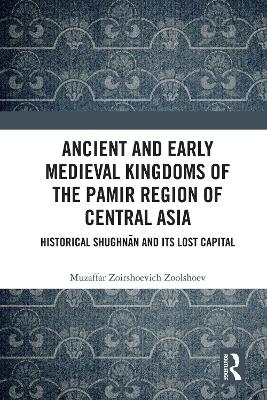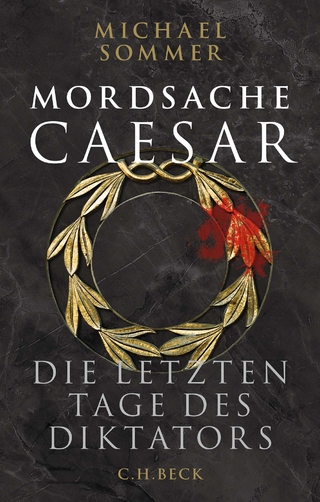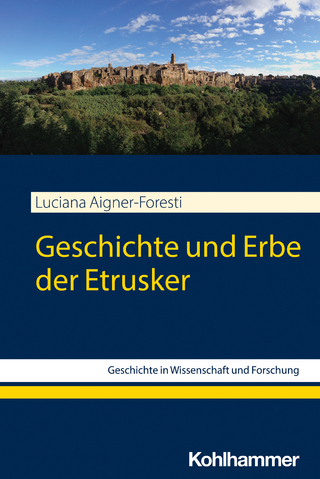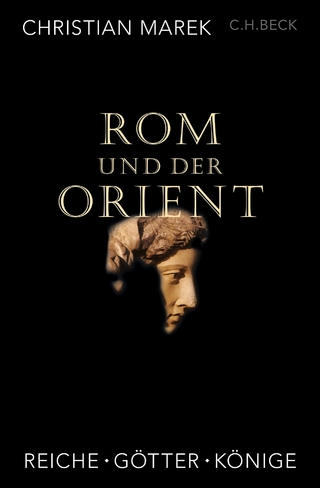
Ancient and Early Medieval Kingdoms of the Pamir Region of Central Asia
Routledge (Verlag)
978-1-032-24676-5 (ISBN)
This focused study is one of the few analytical resources in English that covers the ancient and early medieval history of one of the least studied areas of the vast mountainous Pamir region of Central Asia: Shughnān.
The book brings together scattered fragments of information from a wide range of early Greek, Chinese, Persian, and Arabic sources, the accounts of early European travellers and the scholarly contributions of Soviet and post-Soviet authors, as well as personal accounts and oral history material from the region. Drawing on historical, archaeological, linguistic, and ethnographic data, it provides a holistic overview of the kingdom of Shughnān. It also attempts, for the first time, to identify and locate the town of Kǔhán, which the Chinese historical chronicle, the Táng Shū (Book of the Tang Dynasty, 618–907 CE) describes as the ‘first capital’ of Shughnān. Many archaeological sites are examined and offered as potential candidates for the location of the town of Kǔhán, providing a foundation for future archaeological and ethnolinguistic research in the area.
Ancient and Early Medieval Kingdoms of the Pamir Region of Central Asia: Historical Shughnān and its Lost Capital is suitable for students, scholars, and historians studying ancient and early medieval Central Asia, particularly the Pamir region, as well as those interested in Central Asian history and archaeology more broadly.
Muzaffar Zoirshoevich Zoolshoev is Research Assistant in the Central Asian Studies Unit, Department of Academic Research and Publications at the Institute of Ismaili Studies, London, United Kingdom. His research focuses on the history and culture of the peoples of Central Asia and he is the author of several articles and chapters on this subject.
Introduction; PART 1: Historical survey of Shughnān; The earliest habitation of the Pamirs (10,000–2,000 BCE); Theories on the ancient peoples and societies of the Pamirs (2,000–1,000 BCE); The Kāfirs and the Mak people; The Sakas/Scythians, Achaemenids, Greeks and Macedonians (6th–2nd centuries BCE); The Yuèzhī, Kushans, Kidarites/Chionites and Hephtalites (2nd century BCE – 6th century CE); The Turkic kaghans (6th–8th centuries CE); Xuánzàng’s description of Shughnān; The rise of the Chinese Tang Dynasty (7th–8th centuries CE); Shughnān during the Chinese–Tibetan confrontation (the first half of the 8th century CE); The Umayyad and Abbasid caliphates, Ṭāhirid and Sāmānid states (8th–10th centuries CE); On the names and origins of the earliest kings of Shughnān; Conclusion to Part 1 – Progress, problems and potential for future research; PART 2: The search for the lost capital of Shughnān – the town of Kǔhán; The passage from the Táng Shū, and its Russian, French and German translations; The search for Kǔhán outside present-day Shughnān; The Search for Kǔhán within present-day Shughnān
| Erscheinungsdatum | 04.08.2022 |
|---|---|
| Zusatzinfo | 3 Tables, black and white; 20 Halftones, black and white; 20 Illustrations, black and white |
| Verlagsort | London |
| Sprache | englisch |
| Maße | 156 x 234 mm |
| Gewicht | 303 g |
| Themenwelt | Geisteswissenschaften ► Archäologie |
| Geschichte ► Allgemeine Geschichte ► Altertum / Antike | |
| Sozialwissenschaften ► Soziologie ► Spezielle Soziologien | |
| ISBN-10 | 1-032-24676-6 / 1032246766 |
| ISBN-13 | 978-1-032-24676-5 / 9781032246765 |
| Zustand | Neuware |
| Informationen gemäß Produktsicherheitsverordnung (GPSR) | |
| Haben Sie eine Frage zum Produkt? |
aus dem Bereich


